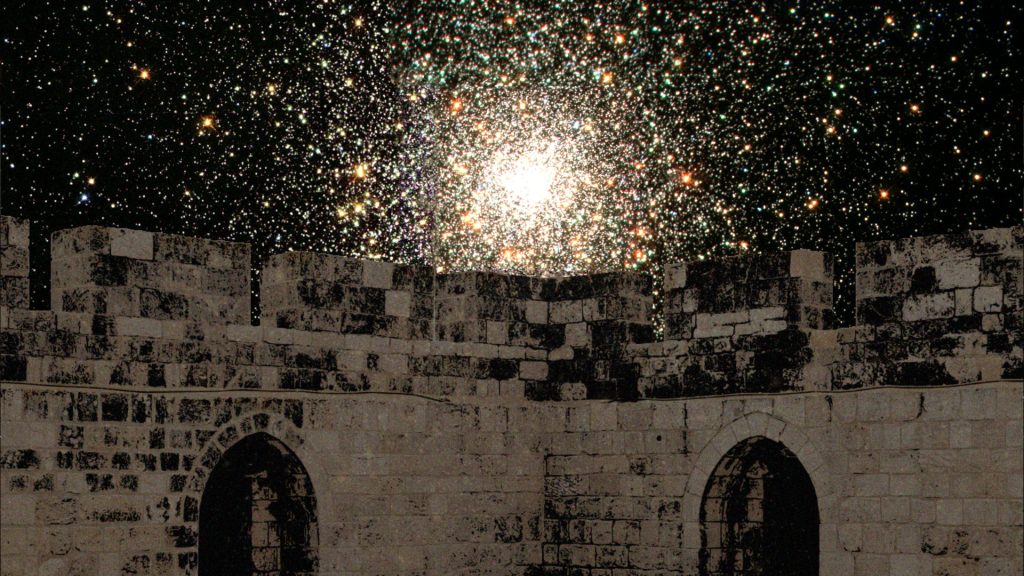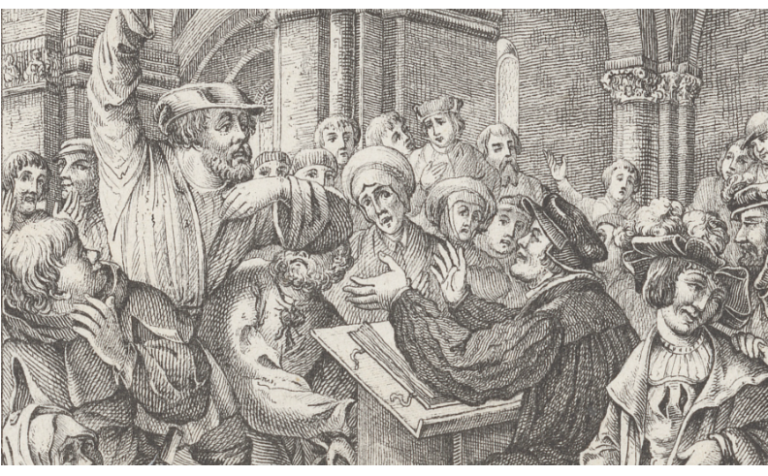The Gospel as Presented in the Book of Hebrews

When we think about “Gospel narratives,” our minds typically turn to the books of Matthew, Mark, Luke, and John. These are, after all, the primary accounts we have of Jesus’s life. For an in – depth exploration of Jesus and his ministry, the four Gospels are unparalleled.
However, there’s one book that comes surprisingly close: the Epistle to the Hebrews. While it’s not structured as a traditional narrative, it details numerous significant moments in the story of Jesus. So much so that at times, it almost seems like a fifth Gospel. Some of the more prominent events it recounts include Jesus’s incarnation (2:14), his sinless life (4:15), and his intercession in heaven (7:25).
A scholar has described this as the “narrative substructure” of Hebrews. It’s a narrative that’s scattered throughout the book in a non – sequential manner. Let’s take a look at this narrative in chronological order. I’ve identified 17 key plot points, grouped under four main headings. This narrative is about Jesus, encompassing not only who he is but also what he did, what he’s doing currently, and what he will do in the future.
Pre – incarnation: ‘The Radiance of His Glory’ (1:3)
1. Eternal Divine Existence
The Son has existed eternally as “the radiance of the glory of God and the exact imprint of his nature” (1:3). His divinity is emphasized throughout the first chapter. He shares God’s honors, such as receiving worship from angels and having a seat on God’s throne (verses 3, 6, 13). He also shares God’s attributes like immutability and eternity (verses 11 – 12), God’s names (“God” and “Lord,” verses 8, 10), and God’s deeds of creating and upholding all things (verses 3, 10 – 12). Time and again, Old Testament passages referring to God are applied to the Son, especially in verses 8 – 12.
2. Creation
The Son is the divine agent through whom God created the world (verse 2). As “Lord,” he “laid the foundation of the earth in the beginning, and the heavens are the work of [his] hands” (verses 10 – 12, citing Psalm 102:25 – 27; see also Isaiah 44:24).
3. Preservation
The Son not only created the universe but also “upholds [it] by the word of his power” (Hebrews 1:3). The use of the present – tense participle “upholds” indicates an ongoing action, in contrast to the past – tense “created” in verse 2.
Incarnation: ‘When Christ Came into the World’ (10:5)
4. Incarnation
Since God was not satisfied with animal sacrifices and offerings, he prepared a body for Christ (10:5). Because the “children” God had given him “shared in flesh and blood,” Jesus himself also partook of the same (2:14). By becoming human, the Son was “made… for a little while lower than the angels” (verses 7, 9). The author refers to Jesus’s time on earth as “the days of his flesh” (5:7; see also 9:26). The next three points describe different aspects of what Jesus did during this time.
5. Sinless Obedience
Jesus was “in every respect… tempted as we are, yet without sin” (4:15). His sinlessness was essential for him to be a perfect high priest. Unlike Aaron, he didn’t need to “offer sacrifices… for his own sins” (7:27; see also 5:3). His sinlessness also ensured that what he offered as a high priest in heaven (himself and his sacrificial death) was “without blemish” (9:14; see also 7:26). Alongside his sinlessness was his obedience. Christ came to do God’s will (10:7), and he “learned obedience through what he suffered” (5:8), meaning he learned to obey increasingly difficult commands and pass more challenging tests.
6. Suffering
During his time on earth, Christ “suffered when tempted,” even offering “prayers and supplications, with loud cries and tears” to his Father (2:18; 5:7 – 8). He endured reproach “outside the gate” (13:12 – 13) and “endured the cross, despising the shame” (12:2). It was “through suffering” that the Son was ultimately “made perfect” (2:10; 5:9; see also 7:28), becoming perfectly suited to serve as a high priest (5:9). Because of his suffering, we have a high priest who can “sympathize with our weaknesses” (4:15; see also 2:17).
7. Redeeming Death
The climax of his suffering was the Son enduring “the suffering of death” (2:9). This is why he took on flesh and blood: “that through death he might destroy the one who has the power of death” (verse 14). This is also why he was “for a little while made lower than the angels,” so that he could “taste death for everyone” (verse 9). His death “redeems [us] from the transgressions committed under the first covenant” (9:15). Just as a will becomes effective only at death, Jesus’s death established the new covenant (verses 15 – 18). As a sacrificial victim, Christ has “been offered once” by his Father “to bear the sins of many” (verse 28; see also Isaiah 53:12). Every mention of Jesus’s blood implicitly refers to his death (Hebrews 9:12, 14; 13:12, 20). But his death was not the end.
Exaltation: ‘Anointed… Beyond Your Companions’ (1:9)
8. Resurrection
When it’s said that Jesus’s cries were “heard,” this is likely a reference to his resurrection (5:7). Clearly, God didn’t save him from death by preventing him from dying. Instead, we’re told that “the God of peace… brought again from the dead our Lord Jesus” (13:20). This resurrection is fundamental to Jesus’s priesthood. In Hebrews, his priesthood is not seen as an office he held on earth but one he entered after “being made perfect” (5:9; 8:4). Unlike mortal Aaron, Christ “has become a priest… by the power of an indestructible life” (7:16). Unlike the Levitical priests, Jesus will never die in office; “he holds his priesthood permanently, because he continues forever” (verse 24). In his death, Jesus became the sacrificial victim whose blood took away sin. But it’s his resurrection that allowed him to be “designated” a priest forever “after the order of Melchizedek” (5:10; 7:15 – 17).
9. Ascension
After his resurrection, Jesus “passed through the heavens” (4:14). The details of this journey aren’t elaborated; the focus is more on what he did upon reaching heaven. However, this passage through the heavens marks the transition from “the days of his flesh” (5:7) to his current priestly ministry in heaven (8:4). It also brought him to the place where he could make his once – for – all offering (9:24 – 25).
10. Heavenly Self – Offering
This is perhaps the most distinctive aspect of Hebrews in the biblical narrative: Jesus’s self – offering as a priest in heaven. After ascending, “he entered once for all into the holy places, not by means of the blood of goats and calves but by means of his own blood, thus securing an eternal redemption” (9:11 – 12). Just as the high priest on earth entered the Most Holy Place once a year with “blood not his own” (verse 25; see also verses 1 – 7), Christ entered the Most Holy Place in heaven with his own blood. But while the earthly high priest entered once a year, Christ entered once for all (verse 7; 10:10, 12). Unlike Aaron, Christ is both the sacrificial victim whose blood is shed and the high priest who carries the sacrificial blood behind the veil to offer it. This is why the resurrection had to occur in between, as a dead priest couldn’t offer anything. He was the sacrificial offering on earth (9:28), but he functioned as the self – offering high priest in heaven (verse 24), which was followed by his session.
11. Session
“After making purification for sins [i.e., in the heavenly sanctuary], [Jesus] sat down at the right hand of the Majesty on high” (1:3). In contrast, “every [Levitical] priest stands daily at his service, offering repeatedly the same sacrifices, which can never take away sins” (10:11). But “when Christ had offered for all time a single sacrifice for sins [i.e., in heaven], he sat down at the right hand of God” (verse 12). Underlying all these references is Psalm 110:1, which is explicitly quoted in Hebrews 1:13 and echoed in 1:3, 8:1, 10:12, and 12:2. Jesus’s session on God’s throne not only establishes him as a priest but also as a king (1:8; 2:9).
12. Intercession
Our high priest may be seated, but he is not idle. “He always lives to make intercession for [us]” (7:25). This is a saving intercession. Jesus has entered heaven “now to appear in the presence of God on our behalf” (9:24, emphasis added). That’s why we’re encouraged to “with confidence draw near to the throne of grace” (4:16).
Consummation: ‘Appointed the Heir of All Things’ (1:2)
13. Second Appearing
Just as Christ “appeared once for all at the end of the ages” in the incarnation (9:26), he “will appear a second time” (verse 28). When we’re tempted to give up, we should remember: “Yet a little while, and the coming one will come and will not delay” (10:37).
14. Saving of His People
The same passages that mention Christ’s second coming also describe it as the time when he’ll “save those who are eagerly waiting for him” (9:28) and when we’ll “receive what is promised” (10:36). That will be the day we “inherit salvation” (1:14) and experience “the resurrection of the dead” (6:2).
15. Changing of the Cosmos
One day, the heavens “will perish,” and Jesus will “roll them up” and change them “like a garment” (1:10 – 12). This will be part of the transition from this world to “the world to come” (2:5). We’re also promised that “yet once more [God] will shake not only the earth but also the heavens,” indicating “the removal of things that are shaken… in order that the things that cannot be shaken may remain” (12:26 – 27). What remains will be the unshakable kingdom (verse 28).
16. Judgment of His Enemies
One day, Jesus’s enemies will be made “a footstool for [his] feet” (1:13; 10:13). The truth of “eternal judgment” is part of the “elementary doctrine of Christ” (6:1 – 2). For those who reject the Son, their “end is to be burned” (verse 8). All that awaits them is “a fearful expectation of judgment, and a fury of fire that will consume the adversaries” (10:27; see also verses 29 – 30).
17. Reign over the World to Come
All of this will be followed by “the world to come,” which God has subjected not to angels but to man – Jesus first, and then us (2:5 – 9). This “city” already exists in heaven, where Jesus is enthroned (12:22; 1:3, 8, 13). But heaven isn’t the full extent of his inheritance. He has been appointed the “heir of all things,” which includes not only heaven but also the earth (1:2).
Preaching the Gospel of Hebrews
Hebrews is well – known for its warnings, and rightly so. After all, Hebrews is a sermon (referred to as a “word of exhortation” in 13:22), and any good sermon is bound to be filled with warnings. However, in Hebrews, these warnings are not just random; they’re based on the narrative substructure. The main exhortation is to “consider Jesus” (3:1). That’s why it’s good news, not just advice.
So, by all means, let’s include warnings and exhortations in our preaching. But we should also ensure that our sermons are woven with this same gospel narrative. We don’t have to include all 17 plot points in every sermon, but we could use them as a guide. We can ask ourselves, “Are there any aspects of Jesus’s ministry that I rarely mention or draw lessons from?”
When it comes to the gospel narrative, Hebrews serves as an excellent complement to the four Gospels. It focuses more on the stages of Jesus’s ministry that extend beyond the timeline of the Gospels, especially his priestly ministry in heaven. No matter how you look at it, the gospel is a story. So, if you need help telling that story, consider using the insights from Hebrews.





